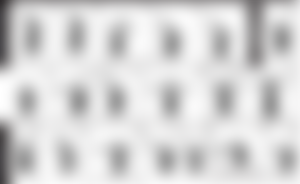
There are “Fouls” and there are “Violations”
Fouls are caused by physical contact (holding, pushing), or actions (acting out like you are going to hit another player but you don’t) or even extreme abusive yelling or cussing (technical foul).
Violations are actions by players that break a basketball rule – such as traveling, stepping on the line, and back court.
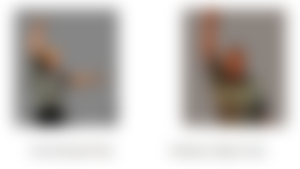
Types of Personal Fouls:
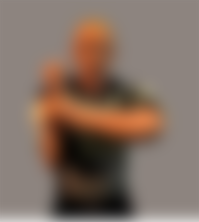
Holding Foul – A “Holding Foul” occurs when a defender holds, grabs, or pulls an offensive player (it doesn’t matter if the offensive player has possession of the ball or not).
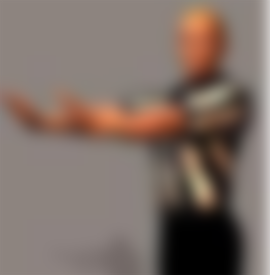
Pushing Foul – A “Pushing Foul” occurs when a defender pushes an offensive player or bumps into the body of an offensive player.
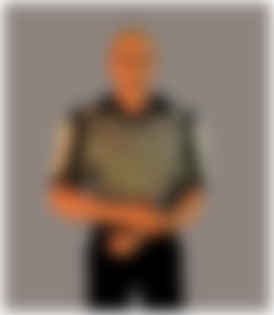
Illegal Use of Hands Foul – This is a foul called when a defender slaps, hacks, or smacks an offensive player with the ball.
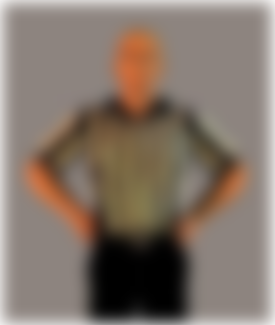
Blocking Foul – A “Blocking Foul” occurs when a defender uses their body and makes contact with an offensive player with the ball (could be in the form of running into the player, or setting an illegal screen, etc).

Charging Foul (Charge) / Player Control Foul – A “Charging Foul” occurs when an offensive player runs into (or over) a defensive player who already has position (the defender must first establish position). Other types of player control fouls are when a dribbler uses an elbow and hits a defender, or excessive physical contact by an offensive post player trying to gain position.
Personal Foul Penalties:
Shooting Foul (2 Point Shot) – If a player gets “fouled” while in the act of shooting , the player gets to shoot free throw(s). If the shot is made – the player gets to shoot 1 free throw, you will hear this called “And 1.” If the shot is not made and a foul is called – the player gets to shoot 2 free throws
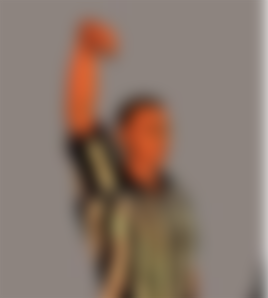
Shooting Foul (3 Point Shot) – If a player gets “fouled” while in the act of shooting a 3-point shot , the player gets to shoot free throw(s). If the shot is made – the player gets to shoot 1 free throw (which could turn out to be a 4-point play). If the shot is not made and a foul is called – the player shoots 3 free throws.
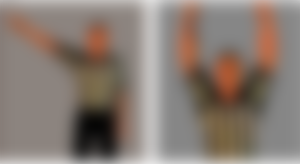
Non-Shooting Fouls / Team Fouls:
Non-Shooting Fouls: If an offensive player is fouled while not in the act of shooting the ball, the ball stays in possession with the team that the foul was committed on (they will get to inbound the ball out of bounds at the nearest sideline or baseline). When inbounding the ball the team with possession will have 5 seconds to pass the ball in to another teammate on the court. All fouls – including shooting fouls and non-shooting fouls add up and are counted as team fouls. Offensive fouls (player control fouls) do not count as a team foul.
Team Fouls: Team fouls are the combined number of fouls that all the players on a team commit during one half of play. The fouls are totaled up and logged in by the scorekeeper in the official score book. When a team reaches 7 fouls, their opponent will get to shoot free throws – this is called a “one and one.” The player shooting the free throws gets to shoot 1 free throw, if they make it, they get to shoot another (one and one), if they miss the first free throw, they don’t get to shoot the second free throw. When a team reaches 7+ team fouls, their opponent is said to be in the “bonus” (and will start shooting free throws after getting fouled). When a team reaches 10 (or more) fouls, their opponent will automatically get to shoot 2 free throws. At half time the team fouls from the first half of the game are “zeroed” out, and team fouls are totaled all over again during the second half of the game.
Important Note: Offensive fouls do not count towards team fouls (so when an offensive player happens to commit an offensive foul, the defense will not get to shoot free throws).
Types of Violations:
Traveling (also called Walking or Walk) – If a ball handler takes too many steps while dribbling the referee can call a violation (considered a turnover by the player and the possession of the ball goes to the other team). Also if a player has stopped dribbling and moves their pivot foot – this is also considered a traveling (or walking) violation.
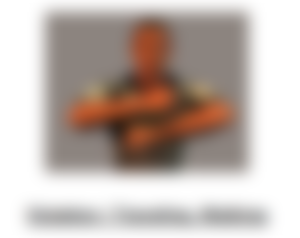
Double Dribble (Illegal Dribble) – A dribbling violation occurs when a player stops dribbling and then attempts to dribble again or if a player attempts to dribble the ball with 2 hands.
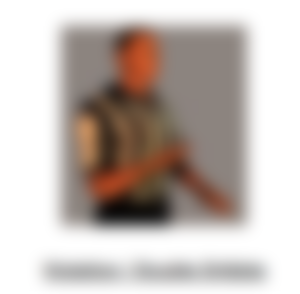
Backcourt (Backcourt violation) – Once the Offensive team has passed the half court line, they cannot: a) dribble and/or b) pass back over the half court line. If this occurs, a “Backcourt” violation will be called by the referee and possession of the ball will go to the other team.

Inbound Pass Violation (5-Second Violation) – There are time restrictions that a player has when the ref hands them the ball to pass the ball into play. The player passing in the ball has five seconds to pass the ball in to another player. If the player fails to pass the ball in within 5 seconds, the ref will blow the whistle (5-second violation), and the ball is awarded to the other team.
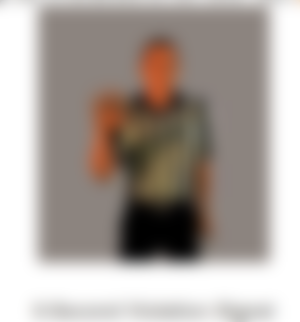
10 Second Violation – When your opponent makes a basket, your team has 10 seconds to get the ball in play and past the half court line – if your team fails to do this within 10 seconds, the ball is awarded to the other team.

Three/ Five Second Violation – An offensive player cannot remain in the “paint” area for more than 3 or 5 seconds (depending on the division), if the Ref happens to spot an offensive player in the paint area for more than 3 seconds, the whistle will blow, and the other team will get possession of the ball.

Closely Guarded Violation (does not apply to 1 st/2nd grades) – An offensive player cannot have possession of the ball for more than five seconds while being closely guarded by a defender. For example if an offensive player is dribbling the ball and is guarded closely by a defender for 5 seconds, the ref will blow the whistle, and the ball will be awarded to the other team.
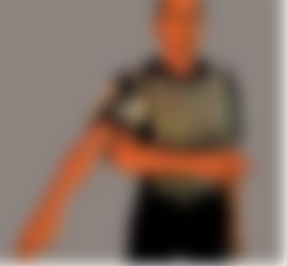
Jump Ball (also called Tie Up or Held Ball) – When an offensive player and a defensive player gain possession of the ball at the same time – the referee will blow the whistle. The referee will then look at the possession arrow (at the scorers table) and award possession to the team that the direction is pointing (possession is on a rotating basis).
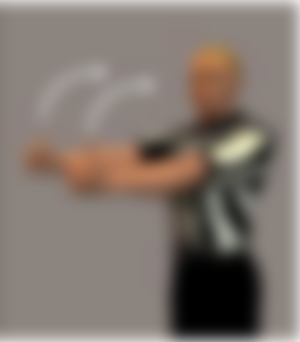
Out of Bounds Designation – When the ball goes out of bounds (for any reason), or a player with possession of the ball steps out of bounds – the referee will designate the spot where the ball went out of bounds.
VOLEEYBAL HAND SIGNALS
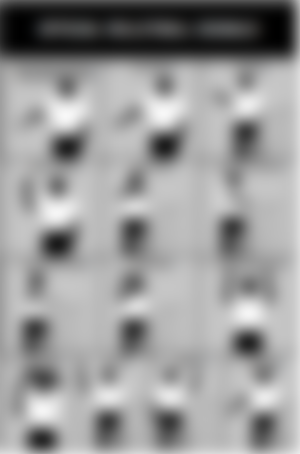

HOW TO USE THE SIGNALS
WHEN STOPPING PLAY, OFFICIALS SHOULD:
● Sound the whistle with authority;
● Signal result of play, point/loss of rally, replay or reserve;
● Signal the violation, and hold the hand and arm signal long enough to be seen;
● Verbalize the decision when necessary, except #15, signal for serve. Signals are given with arm or hand on the side of the team involved. These signals shall be used by the first referee and second referee.
1. Illegal Alignment/Improper Server/Inaccurate Line-up - Circular motion with arm and hand outstretched on side of violating team; then indicate player(s) involved.
2. Line Violation - Indicate the line where violation occurred by extending arm and pointing toward the line with the index finger.
3. Illegal Hit - Slowly lift hand and forearm, palm up, on the side where violation occurred.
4. Delay of Serve - Raise hand on server's side to head height with fingers spread, palm forward.
5. Over-the-Net Fault - Pass forearm, palm down, over the net.
6. Net Fault or Net Serve - Hand of outstretched arm on the side of the net on which the fault occurred.
NOTE: The second referee is not required to touch the net or signal net serve.
7. Legal Back Row Attack - Arm on attacker's side is extended, parallel to the floor at chest level, palm down. Make one slight horizontal sweeping motion.
8. Illegal Attack - Raise hand beside head and rotate forearm forward and downward on the offending team's side.
9. Illegal Block/Screening - Raise both hands to head height, palms forward.
10. Ball Touched - Hand on offending team's side held beside head, palm toward head, then brush upward across fingertips one time with other hand, palm forward. 11. Four Hits - Hand and arm nearest violating team raised, showing four fingers.
12. Double Hit - Hand and arm nearest violating team raised, head high, showing two fingers.
13. Ball Lands Inbounds - Extend one arm with an open hand palm forward toward the floor area between the attack line and the net on the offending team's side.
14. Out-of-Bounds/Antenna Violation - Raise both hand head high fingers together, palms toward face, elbows bent.
15. Begin Service - Extend arm towards server at shoulder height with hand perpendicular to floor, then whistle to serve and move the extended hand and arm in a sweeping motion to the opposite shoulder.
16. Substitution - Two short whistles, rotate open hands at shoulder height two times.
17. Authorization to enter- Extend the arm (palm forward) on the substitution side, and make a forward motion waist high toward the respective court.
18. Point- Indicate point by extending the arm in the direction of the team that will serve next, palm perpendicular to the floor.
19. Replay/Re-serve -With fisted hands, thumbs up, and held shoulder height front of body.
20. Illegal Substitution - Hold arm nearest offending team head height, open hand, fingers together, elbow bent, making two circles with the arm before pointing toward the court of the offending team followed by penalty signal.
21. Time-out - Place the palm of a hand horizontally over a vertical hand on the side requesting the time-out, forming a "T." a. Team Time-out - indicate court of team being charged; b. Official Time-out - tap top of shoulders with hands.
22. Unnecessary Delay - Both hands on hips, elbows out to side, then follow by either timeout or loss of rally/point signal.
23. End-of-Set - Arms crossed in front of chest, hands open followed by a sweeping motion outward,
BADMINTON HAND SIGNALS
Raising his right hand straight above his head. When misconduct sufficient enough to apply rule 16.8 is reported about a player or the umpire witnesses it, he should call the player. He should do the above hand signal and say,".(player's name), warning for misconduct"
The service judges are responsible for monitoring whether a player serves correctly as per rules. Hand signals followed by the service judges are -
Raising the right arm in front slightly, flexing the elbow and keeping the palm vertically facing the opposite direction. It is done to indicate that the shaft of the racket when hitting the shuttle was not below the level of the wrist holding the racket and/or the shaft of the racket was not facing downwards when hitting the shuttle during serving.
Keeping the palm horizontally facing downwards at the level of the abdomen, followed by moving it to the left and right below the level of waist. It is done to convey that the shuttle, as a whole was not under the level of the waist while it was struck during serving.
Extending the right leg and pointing the hand towards the foot. It is done to indicate that one or both feet were not in the service court or remains constant till the serve was completed.
Resting the palm of the right hand on right side of the abdomen, keeping the palm facing the left side of the body, with fingers pointing downwards and pointing the fingers of the left hand to the palm of the right hand with the palm of the left hand facing the abdomen. It is done to show that the first point of contact with the shuttle was not the base of the shuttle.
Hand signals shown by line judges include -
Extending both hands horizontally to the sides of the body. It is to indicate the shuttle landed outside.
Pointing the hand to the line. To show that the shuttle has fallen inside correctly.
Closing both eyes with hands. To convey to the umpire that you are not sure where the shuttle landed.

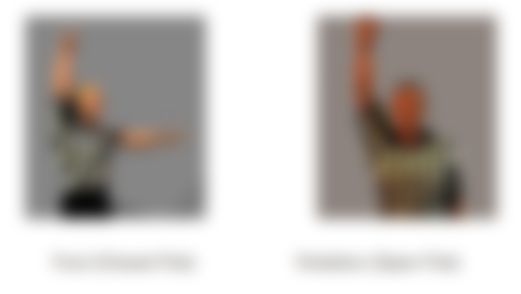
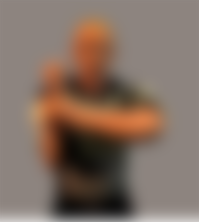
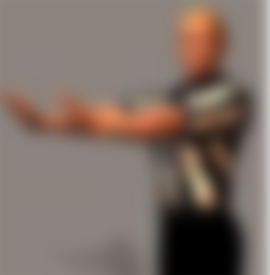
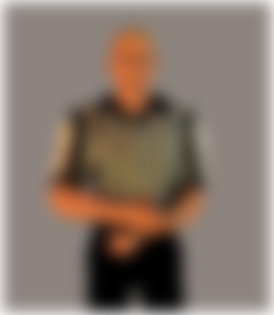
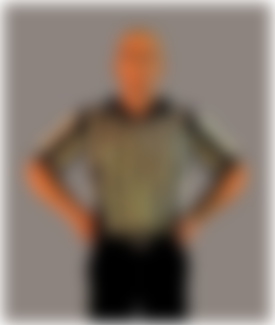

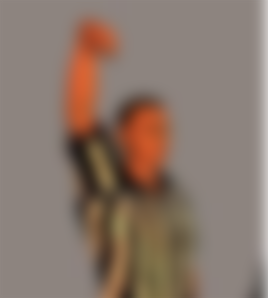
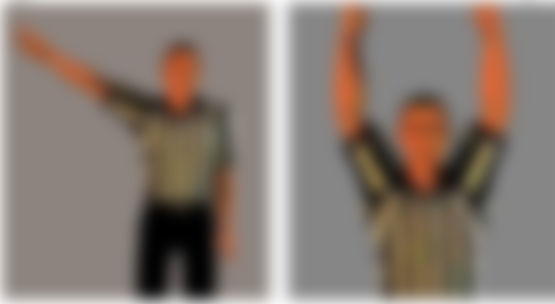
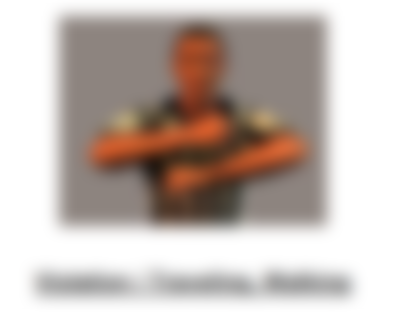

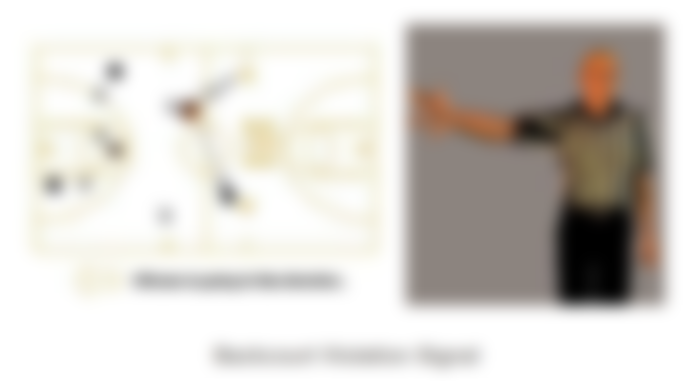
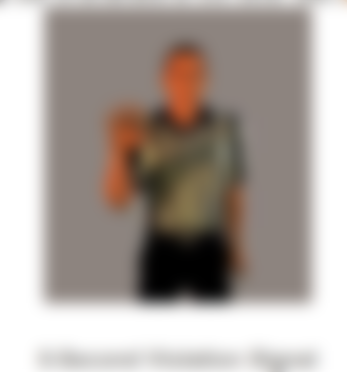
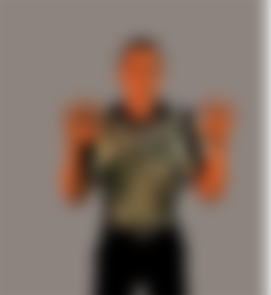
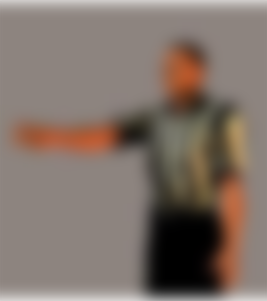
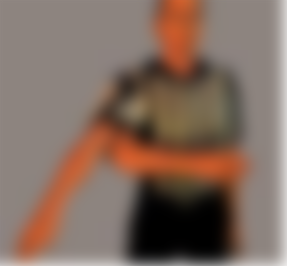
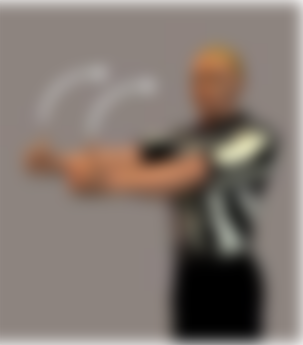


Ohoy. Senior high alert. Hahahhaha vharot.